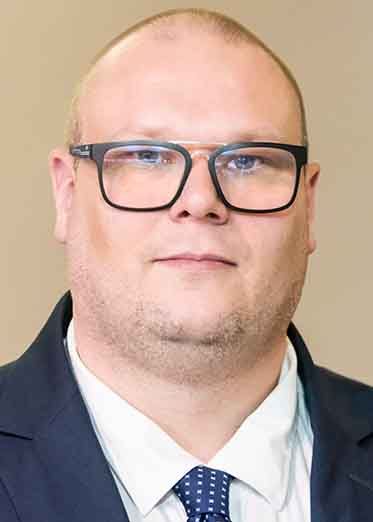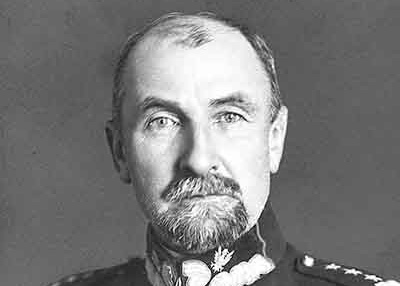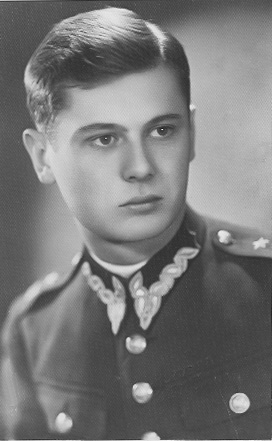August 16 marks the 119th anniversary of the birth of Marian Rejewski, an outstanding Polish cryptologist from Bydgoszcz.
On December 31, 1932, when everyone was preparing to say goodbye to the old year and welcome the new one, Marian Rejewski was sitting alone in one of the rooms of the Saxon Palace, which housed the Cipher Bureau of the Second Department of the General Staff of the Polish Army. On the table in front of him were scattered sheets of paper with mathematical formulas and pencils. A few hours before the New Year, he managed to read the first document encrypted with the German Enigma machine. It was a great breakthrough. Within a few weeks, Rejewski had single-handedly achieved what cryptologists from France and England had been unable to do for many years. To help Rejewski in his work, he was reunited with Jerzy Różycki and Henryk Zygalski. From then on, the three of them worked on breaking successive keys used to decipher messages. Even many years after the war, the Germans believed that Enigma was unbreakable. And yet.

Marian Rejewski (Source: Author, color: A. Wozniewicz)
Marian Rejewski was born on August 16, 1905 in Bydgoszcz. Marian's parents were Józef, a tobacco merchant, and Matylda née Thoms, who lived in a tenement house at ul. Wileńska 6, and after his birth, in a house with a garden at Zduny St. 6a.
Young Marian showed an interest in exact sciences from the beginning. In 1923 he graduated from the State Classical Gymnasium. He continued his education at the Faculty of Mathematics and Natural Sciences of the University of Poznań. While still attending classes, he was selected, along with a dozen or so other students who knew German very well, for a cryptology test. The aim of the course was to start systematic work using mathematical methods, mainly combinatorics and probability, to break modern German machine ciphers. Only a few students were able to solve the test. The best results were achieved by Marian Rejewski, Henryk Zygalski and Jerzy Różycki.
On March 1, 1929, Marian Rejewski obtained a Master of Philosophy degree by defending his thesis entitled: "Developing a Theory of Doubly Periodic Functions of the Second and Third Kind and Indicating Its Application" with a very good grade. After obtaining his degree, he went to Göttingen to study mathematical and insurance statistics. After a year, however, he gave up his studies abroad and returned to Poznań, taking up the position of assistant. After work, he worked 12 hours a week for the Cipher Bureau of the Second Department of the General Staff of the Polish Army on decrypting German radiograms.
After the Poznań branch of the Cipher Bureau is liquidated, Rejewski, Zygalski and Różycki move to Warsaw. There, he works at the Cipher Bureau headquarters, which was located in the Saxon Palace. As their first task, the three of them are given a 4-letter code used by the Kriegsmarine, the German navy, to decipher. The code was eventually broken, but before that happened, in October 1932, Rejewski was assigned to work on another task. Alone, in secret in one of the rooms, he began struggling with the cipher of the new German Enigma I machine, which the Germans were increasingly using to encrypt correspondence.
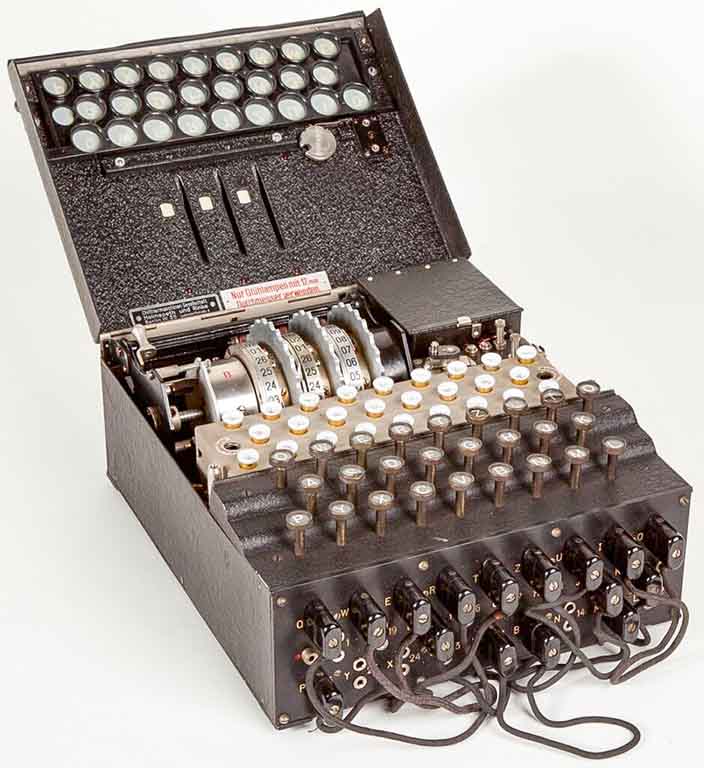
The "Enigma" cipher machine. (Source: Author)
The Enigma code was worked on in the greatest secrecy. Even many Cipher Bureau officers did not know what Rejewski was working on. Around December 10, 1932, Rejewski received a codebook for September and October, which was given to the Poles by the French, for whom it was obtained by their most valuable agent in the Third Reich, Hans Thilo-Schmidt. For deciphering the German Enigma code, this document proved invaluable, as Rejewski admitted in his memoirs. As he wrote, he could have broken the code without the French materials, but it would have taken much longer and would instead have been based on chance. Two months after starting, the work was completed.
What cryptologists from France and England had been racking their brains over, only Marian Rejewski managed to do. However, this incredible success had to be repeated every day anew. At the beginning of 1933, Jerzy Różycki and Henryk Zygalski were included in what the mathematician from Bydgoszcz was working on alone. The chances of further success have now tripled.
In 1937, Rejewski, along with the entire section of the Cipher Bureau responsible for decrypting German ciphers, was transferred to a secret facility near Pyry in the Kabacki Forest near Warsaw. The transfer to the new facility coincided with the Germans changing the coding. Breaking the Enigma had to be started from scratch. Here, however, the so-called "cryptological bomb" came to the rescue, which Rejewski himself created. The "bomb" was a combination of six machines that made it possible to break the cipher in about 2 hours.
On December 15, 1938, the Germans changed the encryption methods again. The effectiveness of Rejewski's invention decreased significantly. It was supported by Henryk Zygalski's invention, the so-called Sheets (Płachty). However, in order to effectively break the German ciphers, it was necessary to use as many as 60 bombs and as many sheets. This definitely exceeded the budget of the Cipher Bureau several times over. Additionally, the next modification of the coding introduced by the Germans the following month, which consisted in increasing the number of swapped letter pairs from 12 to 20 (which increased the number of possible switch configurations to over a thousand), further reduced the effectiveness of decryption using bombs. The only salvation could be cooperation with the intelligence services of the Western allies.
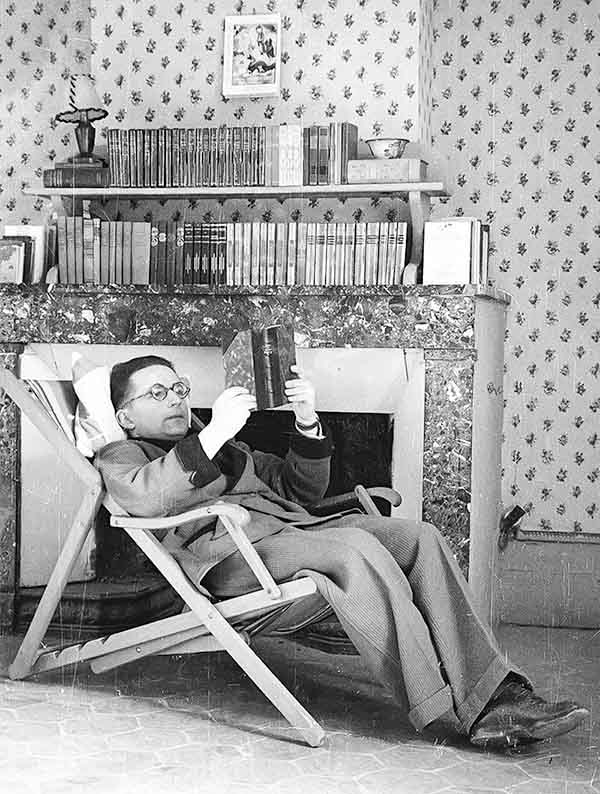
Marian Rejewski in his element. (Source: Author)
On July 25, 1939, almost with war approaching, a meeting was held in Pyry with officers of French and British intelligence. At the meeting, Rejewski explained how to approach breaking the Enigma code. From the accounts written down after the meeting, we know that none of the Allied officers believed that the Poles had broken the code on their own. It was suspected that the relevant information had rather been obtained through intelligence. By mid-December 1939, the British had made at least two sets of Zygalski sheets, one of which was sent to the Bruno decryption center, located in Château de Vignolles in Gretz Armainvillers near Paris. At the same time, in Great Britain, just a few months after the outbreak of war, work began on decrypting Enigma cryptograms.
In September 1939, after the outbreak of war, Rejewski and his colleagues were evacuated to Romania. The three cryptologists made it to Bucharest, where they established contact with the British embassy. The British refused to help the Polish cryptologists, so their next step was the French embassy, where they introduced themselves as friends of Bolek. This was the codename of Gustave Bertrand, whom they had known since the conference in Pyry. By the end of September they were already in France, and from 20 October they resumed work on decrypting German ciphers as part of a joint French-Polish intelligence unit stationed at Château de Vignolles.
After the Germans entered France, the Bruno centre was evacuated to Algeria on 24 June 1940. After the establishment of the so-called Vichy State in the unoccupied part of France, the Cadix cryptology centre was established. Here, Rejewski worked, among other things, on breaking the Polish Lacida coding machine, which took him only a few hours.
When the Germans found the trace of the Polish centre, Rejewski was finally evacuated to Spain. Here, he was captured by the police and imprisoned. Thanks to the Polish Red Cross, he was released and, via Portugal, he reached England. On 16 August 1943, Rejewski and Zygalski (Różycki died on the ship) were sent to the Polish army as privates, where they started working in the radio unit of the Staff of the Commander-in-Chief of the Polish Armed Forces in Stanmore-Boxmoor near London, breaking SD and SS codes. Poles were excluded from the work on Enigma.
On November 21, 1946, M. Rejewski was released from service in the Polish Army in Great Britain and returned to Poland, where his wife Irena Maria Rejewska and two children, Andrzej (born in 1936) and Janina (born in 1939) were waiting for him. He took up work at the Bydgoszcz cable factory Kabel Polski in the sales department, where he worked until 1950. Rejewski's next place of work was the Provincial Union of Workers' Cooperatives, and later the Branch Union of Timber Cooperatives and Various Manufacturing. At that time, he lived in Bydgoszcz, in a tenement house at ul. Gdańska 10. He retired in February 1967. Two years later, he moved to Warsaw. He died of a heart attack on February 13, 1980, in his home in Warsaw, at the age of 74.
Translated from Polish by Andrew Woźniewicz.



